If you’re looking to learn about scrum teams and what they do, you’ve come to the right place. This blog will give you a rundown of everything you need to know about scrum teams, from their roles and responsibilities to how they operate. After reading this, you’ll have an understanding on all things scrum team related!
Introduction
In the field of project management, Agile project management is one of the most active and useful approaches to adapting to changes and delivering projects. Agile techniques are increasingly used in different industries. A Scrum Team is one of the most important parts of the Agile methodology. This blog will look at what is a Scrum Team and what are their roles and responsibilities in an Agile project.
Table of Content
- What is Scrum?
- What is the Scrum Methodology?
- What is a Scrum Team?
- The Scrum Framework
- What is a Scrum Master?
- Benefits of a Scrum Team
- Scrum Roles and Responsibilities
- Scrum Team Product Owner Role and Accountabilities
- Why Is Scrum a Success?
What is Scrum?
Scrum is a framework for building and delivering products. The idea of scrum is that it is an iterative process where you still get everything done, but with shorter cycles.
Scrum is designed to break down your work into small tasks that can be completed quickly. This helps avoid having a huge job stack up and never being able to feel like you’re making progress. Scrum also helps you establish clear goals and keeps the team on track.
What is the Scrum Methodology?
Scrum is an incredibly effective agile development methodology that helps teams work together to address complex projects and deliver amazing results. The simple framework of Scrum provides a great foundation for collaboration and delivering high-value products.
What is a Scrum Team?
The Scrum Team typically consists of five to eleven people who are responsible for various tasks related to the delivery of the project/product. The team is self-motivated and works collaboratively to deliver a successful product. High levels of communication are expected between team members to ensure that they are focused on the same goal and maintaining mutual respect. The team also shares a common set of norms and rules.
A Scrum team has 3 pillars:
- Transparency:
Everyone in the team will have an easy and transparent flow of information about the common goal and the roles and responsibilities of each individual. - Inspection
All team members are entitled to do timely checks on the progress towards a common goal. - Adaptation
An agile Scrum Team adapts to changes as soon as possible to optimize the product value.
The Scrum Framework
There are three roles on a Scrum team – Scrum Master, Product Owner, and Development Team. All roles have different but important responsibilities during the project management process, and although the roles are different, they are all closely interconnected.
What is a Scrum Master?
The word “Scrum Master” was first used to describe someone who is an expert in the Scrum framework and can teach it to others. In simpler terms, the Scrum Master can be thought of as the servant-leader of a Scrum Team. They’re responsible for making sure the team adheres to the theory, practices, and rules of Scrum.
This doesn’t mean they enforce the rules rigidly on team members, but that they help the team to understand the method, principles, and responsibilities of being on a Scrum Team. The goal of a Scrum Master is to provide a smooth process flow and enable continuous improvement.
Responsibilities of a Scrum Master are as follows:
- Maximizing the value created by the Scrum Team
- Setting the stage for the Scrum Team to work collaboratively and effectively
- Mentoring the team to comply with the agile principles
- Motivating and influencing at tactical and strategic levels
- Establishing a good relationship between the team members as well as other stakeholders of the project who are not in the team
- Addressing unproductive attitudes and dysfunctional behaviors
- Clearing the obstacles that limit the team’s productivity
- Protecting the team from outside interruptions and distractions so that they can work efficiently
Benefits of a Scrum Team
Scrum is a project management technique that helps teams move rapidly and efficiently towards project completion while ensuring high quality output. When your company implements a scrum methodology, you can expect the following benefits:
- Work Happens Simultaneously
Scrum teams perform parallel rather than sequential work on the many parts of a project. In this way, team members can make timely adjustments as they occur rather than waiting until the project is complete.
Further, team communication is enhanced by working simultaneously, allowing for incorporating different viewpoints. There’s no way this won’t improve the final products. As a result, scrum teams generate better quality work and often complete their tasks more quickly.
- Workflow Processes Are Made Clear
Scrum is a framework with guidelines for how teams should work together to achieve their goals. The Scrum process consists of multiple iterative steps, including planning the project, the release, the sprint, the daily Scrum, the sprint review, and the retrospective. These stages call for various forms of teamwork.
E.g. iterative development periods range anywhere from one day to four weeks and are dedicated to producing products that can be delivered to customers. This makes the workflow more transparent to everyone involved because everyone knows what to expect from each phase and how they should contribute.
- Return on Investment (ROI) Increases and Risk Decreases
The Return on Investment (ROI) typically rises when businesses use scrum teams. This is because the time and effort spent by groups using the Scrum methodology are better than those using other methods. In addition, it implies they are less likely to make pricey mistakes and may potentially require less human work in the long run.
It is common for a company’s return to increase when it invests less money to complete a high-value project. Further, if a business consistently employs a scrum team that improves ROI, the risk associated with investing in project management may be reduced.
- Team Morale Improves
Inherently focused on the people using it, the Scrum framework and Agile principles are designed to maximize the efficiency and effectiveness of the team’s collective efforts. As a result, scrum teams place a premium on in-person communication and teamwork, self-forming alliances, feedback loops, and long-term sustainability.
Scrum also requires teams to reflect on their work to determine what is and isn’t working and adjust the process accordingly.
Scrum Roles and Responsibilities
In Scrum, the Scrum Master, the Product Owner, and the Developers are each responsible for specific tasks. Therefore, a scrum team consists of all three individuals.
Scrum Master:
The scrum master is a key member of any scrum team and is typically someone who has been trained or certified in the Scrum methodology. As the project’s de facto foreman, the scrum master’s responsibility is to guide team members in the right direction and educate them on Scrum practices.
The term “scrum master” refers to the one person in charge of a scrum team. A scrum master’s responsibilities include:
- Strategically inspiring your staff at the right moments
- Realizing the Scrum framework and the basics of Agile
- Creating a productive, cooperative setting for team members to work in
- Keeping the team safe from anything that could disrupt their work
- Guiding team members as they implement Agile practices
- Facilitating positive interactions with all parties involved, including team members
Product Owner:
The product owner’s role on a scrum team is to make sure that the team is creating products that have value. They do this by monitoring the development process and making sure that the team’s choices are in line with the team’s objectives.
Product owners also need to have a deep understanding of business workflows and the importance of customer needs when it comes to prioritization. In most cases, there is only one product owner on a scrum team, just like there is only one scrum master.
Responsibilities of Product Owner includes the following:
- Project backlog management and order
- Developing a product strategy and mission statement
- Making an active effort to come up with answers for the development team
- Streamlining the development process to increase product worth
- Maintaining a lookout for active participation and needs from prospective customers
- The method of analyzing return on investment and making recommendations to improve ROI for a project
Development Team:
The development team is primarily responsible for creating a deliverable that is both polished and shippable by the end of each sprint. In general, the team works best when its members are organized, skilled in time management and experienced in solving issues. As scrum teams rely heavily on the development team, its members must be able to fulfill a number of essential responsibilities, which include:
- Resolving project issues in a realistic way
- Accepting individual responsibility for a project’s outcome
- Cooperating as a group without formalized management or reporting structures
- Taking a multidisciplinary approach helps ensure that projects are completed on time
- Ensure shippable items are delivered on time during project iterations
Scrum Team Product Owner Role and Accountabilities
Following are the roles and accountabilities of a Scrum Team Product Owner.
A) Product Owner Authority:
The product owner is responsible for articulating the product’s “why,” “who,” and “what,” or the reasons for developing the product, its intended users, and their desired capabilities. However, when making strategic and tactical product decisions, the buck stops with the product’s owners, who take full responsibility for the outcome.
B) Product Owner Responsibility
The product owner’s duties extend beyond only managing the product backlog. The product owner’s primary role is to increase the product’s worth to the company, its customers, and its end users. Therefore, the ability to say “no” is necessary and as important as advocating for a vision and engaging with stakeholders and customers.
C) Product Owner Tasks
The following are the tasks performed by product owners in Scrum to accomplish these goals:
- Establish targets for your product
- Discuss and settle on sprint objectives with the coders
- Gather user, consumer, and stakeholder reactions to product iterations
- Be sure that the product backlog is full of items that have been appropriately defined and will contribute to the product’s end goal
- Maintain a working backlog by updating and improving it with the developers regularly
Product owners are responsible for all of the tasks mentioned above and research to inform product strategy. Key performance indicators and a regularly updated product plan and roadmap are two examples of how this might be done.
Why Is Scrum a Success?
One of the main advantages of using the Scrum methodology is that it allows for a quicker release of the product with improved value. In a Scrum team, the work is done at the same time, but not one after the other. This gives the team a more superior capability to make changes during the project instead of at the end.
Development teams work best with the motto “all for one and one for all.” When everyone is working together towards a common goal, projects can be completed more quickly with better quality. This ultimately leads to higher customer satisfaction.
The various reasons that make Scrum a success are summarized below:
- Increased ROI
- Decrease time to market
- Better team morale
- Promote team collaboration
- Decreased risk
Conclusion
The Scrum framework is based on agile values and principles and is widely used in order to optimize the value of deliverables. A certification course in Scrum agile methodology can provide many benefits, such as acquiring skills and principles of Scrum, as well as expanding your agile career opportunities.
The Certified Scrum Master is a recognition that you have mastered the required skills to successfully establish and manage a Scrum environment. Become a Certified Scrum Master with TopD Learning.
You’ll be glad to know that we have a variety of Agile & Scrum courses plus a lot of different technologies & courses are available so you can learn what you want at your own convenience.
So what are you waiting for? contact us so we can help you in choosing the best course(s) for you!!


